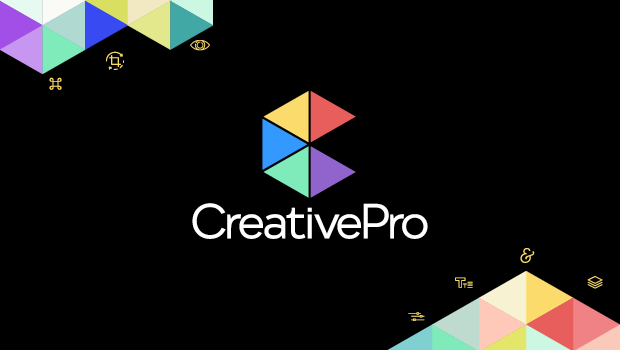Illustrator 9.0: Change is Good (Mostly)

It’s been a long time since Illustrator, Adobe’s venerable vector-based illustration package, has seen an upgrade as substantial as the new version 9.0. Some of the improvements — such as the new Transparency palette — are catch-up-with-Macromedia Freehand additions, but other changes — such as the new Styles palette — are innovations in their own right.
Of course, change is not always easy, and the new features in Adobe Illustrator 9.0 are profound enough that they’ve required some minor reworking of the interface. Fortunately, the new capabilities are compelling enough to make learning a few new tricks well worth the effort for most users.
Sheer Power
Transparency in Illustrator has been available only through the addition of third-party plug-ins, and this long-overdue feature is now built-in to Illustrator 9.0. And as with many of the program’s new features, Adobe has done more than add a simple control.
The new Transparency palette allows you to easily change the transparency (or opacity, if you’re that type of person) of any object, group of objects, or layer. Transparency can also be defined for bitmapped objects, whether imported or rasterized within Illustrator 9.0. In addition, a full set of Transfer modes, identical to the transfer modes found in Adobe Photoshop, are provided. As with transparency, these modes can be applied to objects, groups, or layers.

The Transparency palette also provides a new Opacity Mask control. An Opacity mask uses the luminance value of an object’s fill color to mask underlying objects. For instance, darker colors might create a more opaque mask than lighter colors. Essentially, Opacity Masks are alpha channel masks that allow you to create complex transparency and masking effects directly within Illustrator. Opacity masks can also be created from bitmapped objects.

Adobe has done a very good job with its Transparency feature. The ability to apply transparency at both the Object and Layer levels provides a tremendous amount of creative flexibility.
The new transparency feature is possible because of a fundamental change in the way Illustrator creates and stores documents. With version 9.0, Illustrator documents are now based on a new PDF format, which will be used by version 5.0 of Adobe Acrobat. In addition to facilitating the transparency feature — something PostScript can’t do — the new file format makes for improved workflow between future PDF files and Adobe’s other graphics and printing products. Unfortunately for users, however, the change also creates potential problems with backward compatibility. Many users are reporting problems when saving documents in Illustrator 8 format, though we managed this trick without a glitch.
Layer Magic
Illustrator 9.0 includes a complete re-working of the program’s Layers palette. Layers can now be nested inside each other and appear as a hierarchical stack within the Layers palette. Each object you create appears as a new sub-layer within the Layers palette. The new approach has several advantages over that of previous versions.

Because groups of objects now appear as their own sub-layer, it’s much easier to select and move them from one layer to another. Also, Illustrator’s old masking command is now a layer-level operation. In previous versions, masks were constrained to the objects that were grouped with the masking shape when the mask was created. With version 9.0, you can add objects to an existing group simply by creating a new sub-layer within the Layers palette.
With these changes, Illustrator’s Layers palette makes a lot more sense than in previous versions, which used one stacking order within a layer and a different stacking order for the layers themselves. With every object represented in the Layers palette, it’s now possible to see a visual representation of the true organization and stacking order of your entire document.
On the downside, users accustomed to the previous masking commands will have to adjust to the new masking approach, which may even require that documents be organized differently. Because masks are constrained to specific layers, you may find yourself needing to rethink your approach toward a drawing.
Effects and Appearance
Next to the Filter menu you’ll find a new Effects menu, which works in tandem with the new Appearance palette to allow fully editable, parametric effects. Unlike Filters, Effects are non-destructive: They can be removed, edited, or altered at any time. Adobe has re-worked many of its existing filters into effects, meaning you can now apply everything from Gaussian Blurs to drop shadows to arrowheads — and then change the parameters of those effects later.
All properties of an object — stroke, fill, and applied Effects — are displayed in the new Appearance palette. To change any parameter, including an Effect, you simply double-click on its name in the Appearance palette, and the appropriate editor will be presented.

Just as you can edit a shape without affecting its stroke and fill, any Effects applied to a shape remain active as you edit the shape. Applied effects simply re-apply as the shape is altered.
The Appearance palette provides more than just a simple way to edit a shape; it also allows you to apply multiple strokes and fills to a single shape. Simply select New Fill or New Stroke from the Appearance Palette menu and you can add multiple, distinct fills and strokes. You can also apply separate effects to each fill or stroke. For each fill, you can specify transparency and blending modes, to control how the different fills interact.

Needless to say, this facility provides for an incredible degree of editing power, but it also allows for the creation of textures and patterns that simply were not possible in previous versions of Illustrator. Adobe’s implementation and engineering of these new tools is impressive — and welcome.
In Style
Long lagging behind Macromedia Freehand in the Style sheet department, Illustrator 9.0 has finally caught up. By simply dragging an Appearance into the new Styles palette, you create a Style Sheet that can be applied to any other object. As one would expect, editing the original style automatically updates any instances of the style that have already been applied to other shapes. This feature is long overdue in Illustrator, and Adobe has provided a nice assortment of pre-built styles. Dissecting them is a good way to understand the power of the new Appearance palette.

New Web Tools
Long a staple for print-centric graphic design, Adobe Illustrator has been slowly taking on Web production facilities as well. Version 9.0 includes a large assortment of Web tools, including the ability to work with pixels as your unit of measurement (and including a pixel-based preview), a choice of CMYK or RGB color modes, and a Photoshop-like Save for Web feature that offers real-time previews of different compression settings.
Other standout features include a path simplification command that optimizes a path by removing excess control points; Web-safe color selectors; the ability to create polygonal image maps; and a very flexible Release to Layers command that instantly spreads all objects in a selection into different layers to facilitate the creation of animations.
The most exciting Web feature, though, is the ability to export vector information in Flash format or, alternatively, the new SVG format. The Flash export dialog lets you export a graphic as a single SWF file, export each layer as a separate frame in an SWF file, or export each layer as a separate SWF file. Illustrator’s Export is smart, automatically creating Symbols for each object, and breaking apart your graphic into objects that can be easily re-combined and animated in Flash. If you need to re-purpose an existing Illustrator document for Flash, or if you’re tired of Flash’s lackluster drawing tools, this feature is a great time-saver.

What’s in It, and What’s Not
Illustrator 9.0 includes a number of other enhancements and changes ranging from new Lasso tools for selecting objects to a Photoshop-like Free Distort command. It also boasts improved ICC color management.
Unfortunately, the package also includes a number of new bugs. We repeatedly had weird screen-redraw problems inside Illustrator and when switching out to other applications on a 400MHz G4 with OS 9.04. Many users have reported memory errors and Type 2 errors as well as incompatibility with some third-party extensions. We had no problems printing to PostScript printers or software-based PostScript RIPs, but Illustrator 9.0’s printing does feel slower than previous versions.
Then, too, there are still things missing from Illustrator. Though Adobe has been striving for years to unify its interface across its product line, for some reason it chose to leave Photoshop’s excellent History palette out of Illustrator. And Illustrator 9.0 still lacks multi-page documents and the attendant layout and formatting controls that such a feature would provide.
All in All
Adobe Illustrator 9.0 is not perfect, and it’s a little buggy, but it’s the most substantial, most exciting upgrade to Illustrator in many years. Warning: The changes come with a slight learning curve, and some upgraders have already begun voicing loud, vehement objections. To this writer’s mind, however, the new features are so powerful and provide such a level of creative control that the requisite changes to the program are well worth dealing with. If you’re on a very tight production schedule with little room for lost time, then you might want to wait until Adobe has a few bugs ironed out (those bugs caused us to rate the program at 75 of 100 rather than 80), and you’ll definitely want to test the new version’s printing speed with your equipment. Overall, though, this writer considers version 9.0 a must-have upgrade for Illustrator users.
Read more by Ben Long
This article was last modified on January 18, 2023
This article was first published on July 19, 2000




